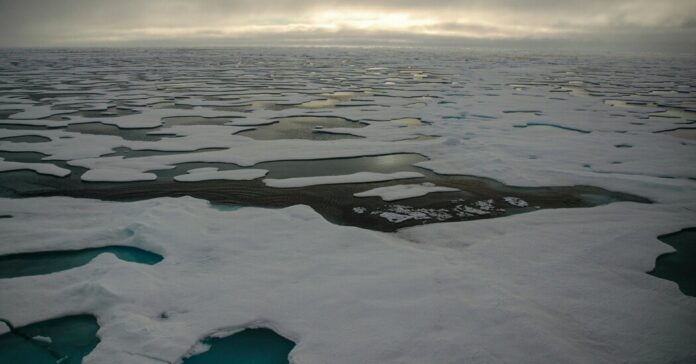Scientists have developed a novel method to reconstruct Arctic sea ice levels spanning 30,000 years by analyzing traces of cosmic dust embedded within seafloor sediments, as detailed in a recent study published in the journal Science. This innovative approach offers a valuable new tool for understanding the Arctic’s past climate and provides insights into potential future changes.
The Cosmic Dust Technique: A New Window into the Arctic’s Past
The research team focused on identifying and analyzing cosmic dust—fine debris originating from space events like asteroid or comet collisions—within sediment cores collected from the Arctic Ocean. These particles, containing a distinctive helium isotope signature, fall through the atmosphere consistently and settle on exposed surfaces. The presence of this dust on the ocean floor indicates a lack of sea ice cover, allowing the particles to reach the seabed undisturbed.
“The Earth has undergone major climate shifts over the past 30,000 years,” explained Frankie Pavia, an assistant professor of oceanography at the University of Washington and lead author of the study. “This provides a unique record where we can examine past conditions and gain a better understanding of where the Arctic might be headed.”
Reconstructing Sea Ice Through the Ages
By examining sediment layers, scientists were able to track the accumulation of cosmic dust over time. During the last ice age, very little dust reached the ocean floor, signifying a constant layer of sea ice cover. As the climate gradually warmed towards preindustrial temperatures over millennia, the amount of dust accumulated in the seabed increased, providing a clear indication of diminishing sea ice extent. Each centimeter of sediment corresponds to approximately 1,000 years of accumulation.
To confirm that changes in helium detected were indeed caused by sea ice and not by other environmental factors, researchers also tested for a thorium isotope. Their initial findings proved so compelling that, as Dr. Pavia described, “they really set us off to the races of saying, I think we really have a way we can study past ice changes in the Arctic.”
Why This Matters: Context and Trends
This research is particularly significant because it provides a new, independent method for reconstructing past sea ice conditions. Current techniques rely on the remains of microorganisms that live at the edge of ice, which are inherently less reliable. Understanding the historical response of the Arctic to past climate changes is crucial for predicting future trends.
The Arctic is experiencing rapid transformations due to human-caused climate change, with temperatures rising nearly four times faster than the global average. This warming trend is driven, in part, by a feedback loop: as sea ice melts, more dark ocean water is exposed, absorbing more sunlight and further accelerating the warming process. The consequences of this trend are far-reaching, impacting marine wildlife habitats (like those of polar bears and seals), forcing adaptations by Indigenous communities, and potentially opening up new shipping routes.
Limitations and Future Directions
The study utilized sediment cores collected in 1994 during the United States’ first major scientific expedition to the North Pole—samples that had been stored since then. Obtaining additional samples for further analysis can be difficult and costly. Nevertheless, the researchers are optimistic about the potential of this technique to answer crucial questions about Earth’s past and future.
“It’s like a big equation with many unknowns, and now you can tackle more of them,” concluded Walter Geibert, a marine geochemist at the Alfred Wegener Institute, who was not involved in the study. The ability to comprehensively study Arctic sea ice history using cosmic dust marks a significant advancement in our understanding of this critical region. > Understanding the historical response of the Arctic to past climate changes is crucial for predicting future trends.












































